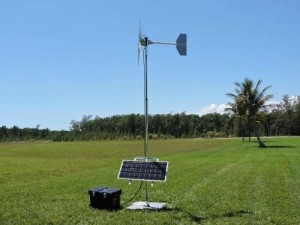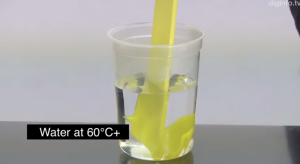Students build portable hybrid power system to help in natural disasters
When natural disasters like the earthquakes in Nepal or the volcano eruption in Chile occur, one of the most pressing issues hindering rescue efforts is the loss of electricity.
A senior design project completed by three students in the College of Engineering may help bring power back quicker to those dealing with the aftermath.
Project leader Andre Lima Siuffo, Marisol Contreras and Kevin Gregorio designed and built a portable and low-cost renewable system that utilizes both solar electric and wind electric technologies to generate power.
With support from professors Andres Tremante and Sabri Tosunoglu, the system Siuffo and his team created uses a wind turbine and solar panel that work in tandem to charge a battery bank that can be used to provide electricity.
“One of the main purposes of the project was to prove that it is technically very easy to build a hybrid system and it’s not expensive at all,” said Siuffo, a mechanical engineering major graduating this summer.
The hybrid system is capable of producing 1.5 kilowatthours (kWh) per day. While not enough to power an average American household, which uses around 30 kWh per day, these portable systems can be particularly useful in remote areas and emergency situations.
The ability to power laptops, light bulbs, hot plates and other devices with consistent and continuous energy is critical in areas ravaged by disaster. Multiple units used together can potentially help relief teams in natural disaster situations provide electricity to perform a wide range of essential services.
“The capacity to generate this much power can be lifesaving in many situations,” Siuffo said. “We wanted to find a balance between producing power and maintaining portability.”
With each unit weighing about 250 pounds, they can be transported on pickup trucks and assembled and disassembled in a matter of minutes.
While similar systems normally run between $5,000 and $10,000 per unit, Siuffo and his team were able to create a fully functional prototype for approximately $1,700.
Tremante and the senior design team that built the power system hope that with support from the private sector, these prototypes can one day be produced commercially.
“We want to bridge the gap between the university and the industry through sustainable development projects,” Tremante said.
References:http://phys.org/




